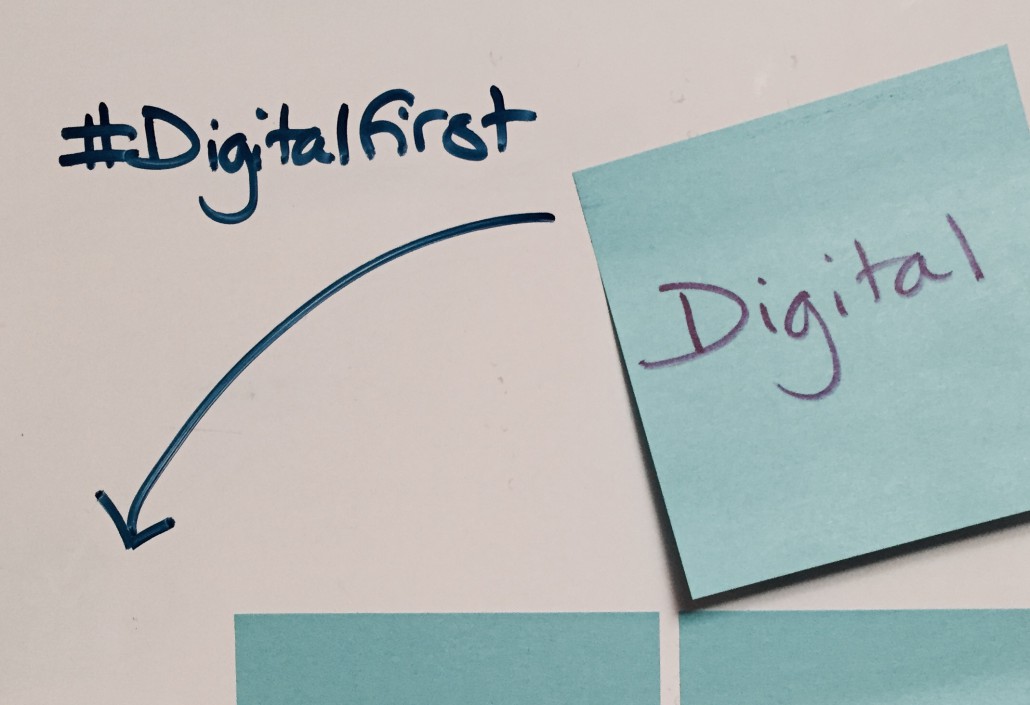Think Digital First: Open the Door to Innovation
admin
- December 2, 2016

At mediaman, there are legends about clients who think radically about digital. Our Director of UX once told me that she worked with a (much revered) client in Germany who “felt that digital was the most complicated, so he always started with that.” Our conversation took place after a project kick-off meeting for a client about to refresh its international corporate websites. The briefing included the new print style guide and a comment from the client on the irony—“you’d think that digital would come first in this day and age.”
This is not a post about design thinking and digital. It is a post about why digital should come first in your communication strategy. It’s about how digital makes you a better thinker and a smarter company.
#DigitalFirst
The beauty of digital is that it is an intimate communication with the audience. While traditional marketing tactics are usually one-to-many, digital is one-to-one. Because of this, digital is often considered the functional aspect of communications; it is the place where the traditional marketing call-to-action, more often than, not sends people.
In my opinion, this is an example of when last is not least. If your campaign has been strong enough to drive people to a digital touchpoint, then this is actually the most important meeting. Another way to think of it: if traditional communication is giving your Crush your phone number, then digital is the First Date.
A communication strategy that begins with thinking about how digital will execute the Big Idea sets the bar for an innovative and intimate campaign. Digital’s one-to-one conversation with the consumer ensures that you are focused on the audience and their experience. Using the lens of what is useful for the audience regarding their preferred digital touchpoints, or even new tools or platforms, opens the door to creativity in the execution.
Too often digital communication strategies, especially social media, look at digital and the customer with a one-directional, or traditional, communication mindset. The audience is not thought of as people with tasks that they are doing online, but rather prospects or fans meant to be distracted, sold to, extract information from, or manipulated (often through puppies, kittens, babies or Star Wars) into promoters (or, if it backfires, haters) of the brand.
Moving digital upstream in the communication process helps your organization get close to your audience. It also helps to craft a message with an inherently authentic Big Idea, since it must have a relevance that speaks deeply to your brand and the broad spectrum of audience members using the digital touchpoints.
For instance, one of our clients, a specialty pharmaceutical company, has a target audience that includes a diverse audience of researchers, primary care physicians, media, career-seekers, and patients. Creating a new, more robust and emotional template for the client’s website resulted in crafting a new home page campaign with rich, unexpected images paired with stories that emphasize the employees’ passion as a source of strength for overcoming obstacles. From the website, this campaign will roll out to other mediums, and is already inspiring other ideas and new touchpoints.
The Takeaway
Where does digital fall in your communication process? If it is a place where information goes to be posted, stored, or referenced, then your website is still acting as a brochure. If there is a call-to-action which the audience is following through on, ask yourself how the brand is putting its best foot forward at each point during that experience.
Another thing to consider is where you and your digital agency begin a project. Our goal at mediaman is to build useful and engaging digital experiences, so we always emphasize beginning with a Discovery Phase. This helps to eradicate or validate assumptions and clearly identify opportunities for the website to work harder or fill gaps. It is a first dialogue with the audience which will enable a larger dialogue to ring true, be effective, and woo your audience.
What are some of the ways that you are—or can be—inspired by your audience to enhance your digital communication strategy? Do you believe that digital should come first? Tell us what you think!

